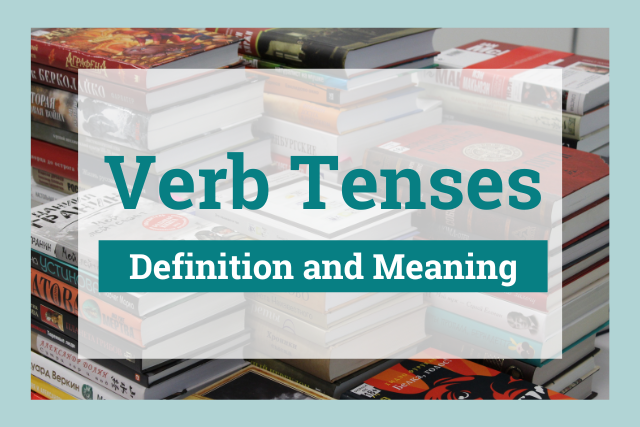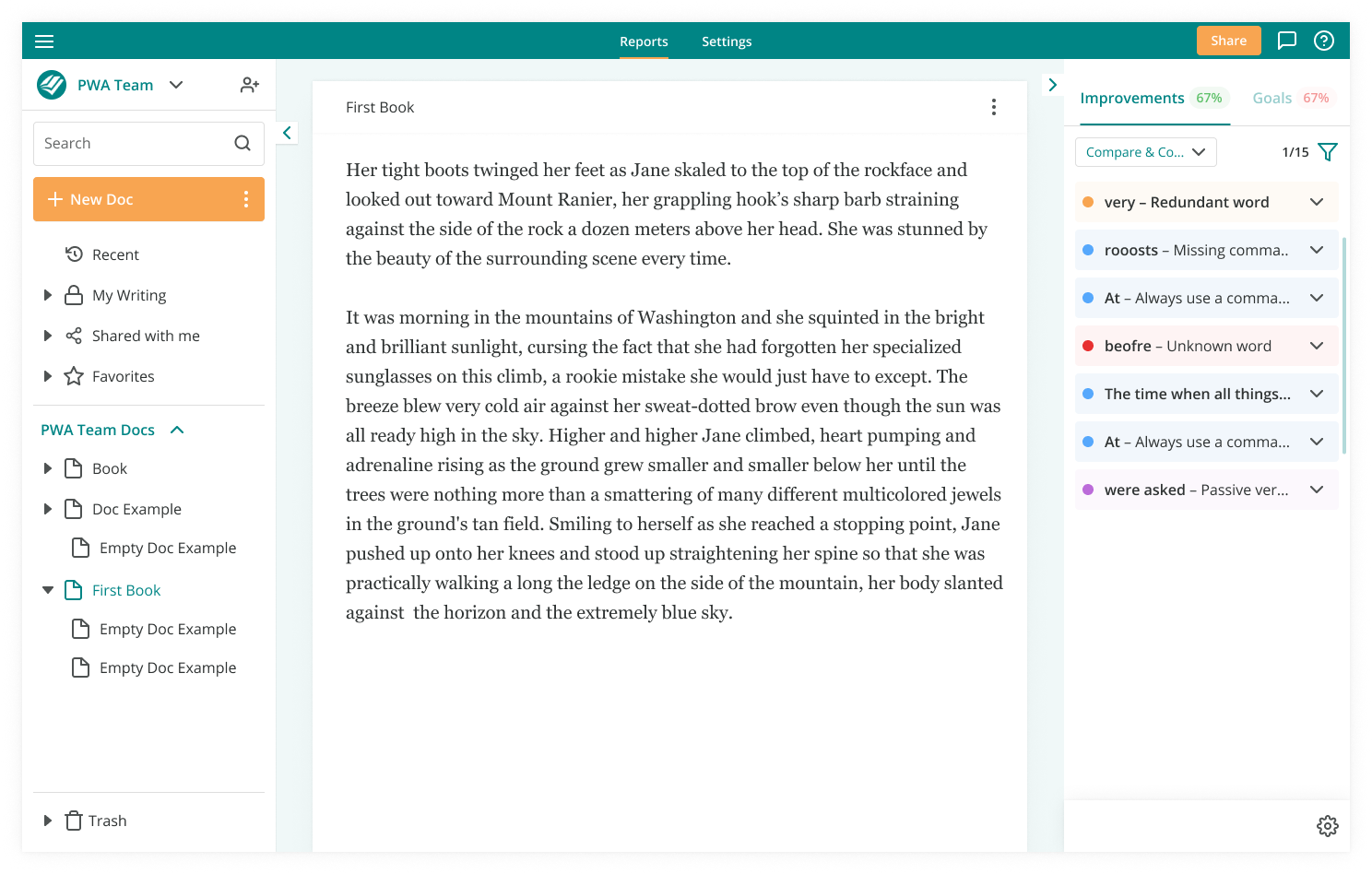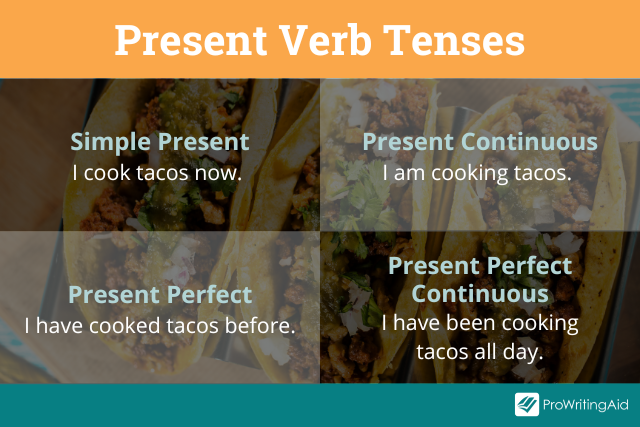
There are twelve main verb tenses in the English language.
Today, we’re talking about what these verb tenses are and how we use them.
Verb Tenses: Definition and Meaning
A verb tense shows a time reference, or when and how a verb occurred. We conjugate verbs differently depending on the verb tense and the time reference we need to explain.
There are three main categories of verb tenses: past, present, and future.
Within each of these categories, there are continuous tenses (also called progressive tenses), perfect tenses, and perfect progressive tenses (or perfect continuous tenses). Together, these tenses make up the indicative mood of verbs.
English verb tenses are confusing. ProWritingAid’s grammar checker can ensure you're always using verb tenses correctly.

Present Verb Tenses
The first big category of verb tenses is the present tense.
However, not all four of the present verb tenses describe something happening now. They’re called present because the first verb of the conjugation is in simple present.
Simple Present
We use the simple present tense to describe things that are either happening right at this moment or things that happen regularly.
Here’s what the simple present tense looks like:
- I cook tacos now.
- She cooks tacos every Tuesday.
Present Continuous
The present continuous tense, also called the present progressive tense, describes something occurring right now, too.
It suggests that something either occurs frequently or that it may be an ongoing action. It can also show that something will happen in the near future.
We conjugate the present continuous tense by using a simple present form of be + an -ing verb. Here are two examples:
- I am cooking tacos.
- She is cooking tacos later tonight.
Present Perfect
The present perfect tense shows that something occurred in the past, but at an indefinite time, or that something happened in the past and continues into the present.
Conjugate the present perfect tense by using have/has + past participle, like this:
- I have cooked tacos before.
- She has cooked tacos every Tuesday since I can remember.
Present Perfect Continuous
We use the present perfect continuous, or the present perfect progressive, tense to show an ongoing action that started in the past and continues in the present.
You can form the present perfect continuous tense with the form has/have been + -ing verb (also called the present participle). Let’s look at two examples.
- I have been cooking tacos all day.
- She has been cooking tacos since she was a little girl.

Past Verb Tenses
Our next category of verb tenses are past tense verbs. Unlike present tense forms that can show past, present, and future events, all past verb tense forms occur in the past.
Simple Past
The simple past verb tense shows an event that occurred at one particular point in the past. For most verbs, you add an -ed or -d to the end to form the simple past.
The majority of irregular verbs have a slightly different format than this.
Here is an example of the simple past tense:
- She cooked tacos last Tuesday.
- (irregular verb) She ran to the store.
Past Continuous
The past continuous or past progressive tense shows an ongoing action or occurrence in the past, but it is not currently happening.
Conjugate the past continuous form by using the simple past form of be + -ing verb.
- She was cooking tacos when the doorbell rang.
Past Perfect
The past perfect tense, also called the pluperfect tense, is used to describe an event that occurred at an indefinite time in the past.
We also use it to describe something that happened further back in time, i.e. before the simple past tense.
No matter what the subject is, you’ll use the format had + past participle for this tense.
- She had cooked tacos before she opened the door.
Past Perfect Continuous
We use the past perfect continuous (also called the past perfect progressive) tense to show something that started in the past, was ongoing, and then ended at a more recent time in the past.
We write this form as had been + -ing verb, like in the example below.
- She had been cooking tacos all day until her stove broke.
Future Verb Tenses
All forms of the future tense are used to talk about things that haven’t happened yet, but will happen. Let’s look at each of the four future tenses.
Simple Future
The simple future refers to an event that hasn’t happened yet but will start and finish sometime in the future.
Write the simple future tense as will + base form of verb.
- I will cook tacos next week.
Future Continuous
The future continuous, or future progressive, tense refers to actions that will begin in the future and will be ongoing.
Conjugate this verb tense as will be + -ing verb.
- I will be cooking tacos on Tuesday evening
Future Perfect
The future perfect tense refers to events that will occur in the future and be completed before another point in the future.
We write this as will have + past participle.
- I will have cooked tacos before you get home from work.
Future Perfect Continuous
The future perfect continuous (future perfect progressive) tense is used to describe events that will start in the future, be ongoing, and stop at another future point.
We write this as will have been + -ing verb.
- I will have been cooking tacos all day by the time you get home from work.
These twelve tenses make up most of the verb usage in English. These examples will help you understand how to use verbs correctly every time in your writing.


